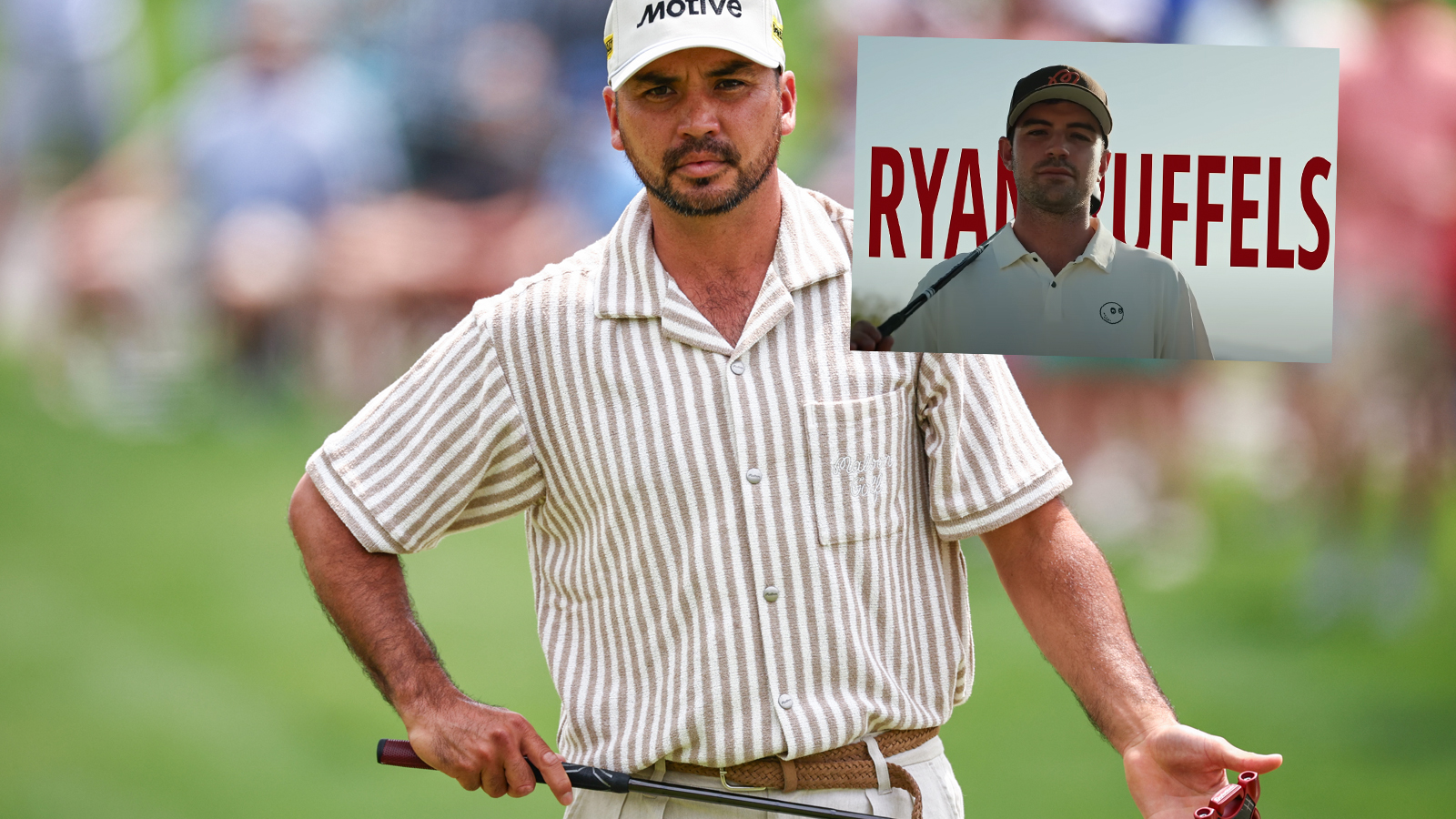Who are golf’s five-tool players? – Australian Golf Digest

- by Admin
- October 25, 2024
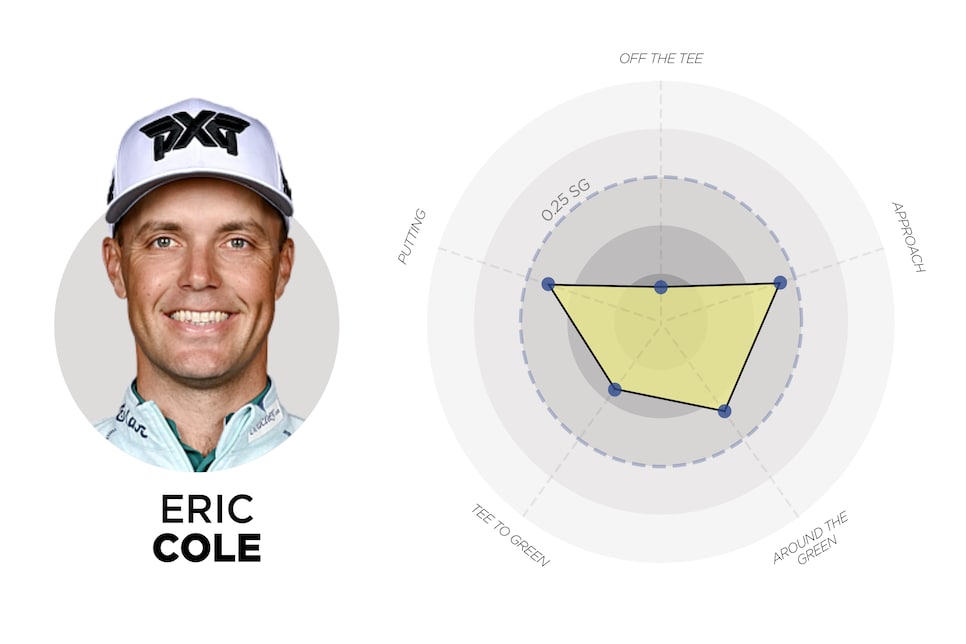
In any sport, the rarest athletes are those who display not just singular brilliance, but who excel in every facet of the game. In baseball, these “unicorns” are often dubbed “five-tool players”—they hit for power and for average, run, field, and throw with elite skill. But what if we took that concept and applied it to professional golf?
Enter the five-tool golfer—a mythical creature who can bomb it off the tee, dazzle with their iron play, chip with finesse, perform consistently from tee-to-green, and putt masterfully. So, how do these two athletic archetypes compare? Let’s dive into the numbers, break down the skills, and find out who really reigns supreme in the multi-tool athlete kingdom.
Spoiler alert: nerdiness ahead.
RELATED: The best baseball cities for golf
Ok first, let’s clarify what a five-tool player is in baseball. The five-tool scale is a measure by which players are often graded or evaluated. The five areas are…
- Hitting for power
- Hitting for average
- Base Running
- Throwing
- Fielding
If a player excels in all five areas of the game, they are considered a five-tool player. Recent players considered five-tool players are the likes of Mookie Betts, Mike Trout and Bobby Witt Jr.
When it comes to golf, players are typically compared based on Strokes Gained performance. The PGA Tour has five strokes gained categories that combine to give a player their “Total Strokes Gained” figure. Those five categories are off the tee, approach, around the green, tee-to-green and putting.
Using those five statistical categories, we can identify the PGA Tour’s version of a five-tool player.
In 2024, there were 170 players who had PGA Tour cards and played enough rounds to be ranked statistically. When looking at a player’s strokes gained number in a specific category, any number in the positive (i.e. +0.05) would make them above average in that category. For the purpose of evaluation players using the “tool scale”, I have awarded a tool to each player for each strokes gained category in which they gain 0.25 shots per round or more. Generally speaking, that puts a player in the 75th percentile.
Reminder, these evaluations are based on PGA Tour performances in 2024 (so far) only. It’s less a reflection of their skill set and based instead on how they performed.
Zero-Tool Players
The label of “zero-tool player” seems harsh, but isn’t as dire as it may sound. Take Eric Cole, for example. Cole finished 50th in the FedEx Cup, had 11 top-25 finishes and earned more than $3.3 million. He actually gained strokes in four of the five strokes gained categories but none more than 0.25 strokes per round. Though he lacks a true superpower (or two), he is a solid PGA Tour player.
Total number of players: 50Notable examples: Eric Cole, Max Homa, Rickie Fowler, Justin Rose.
One-Tool Players 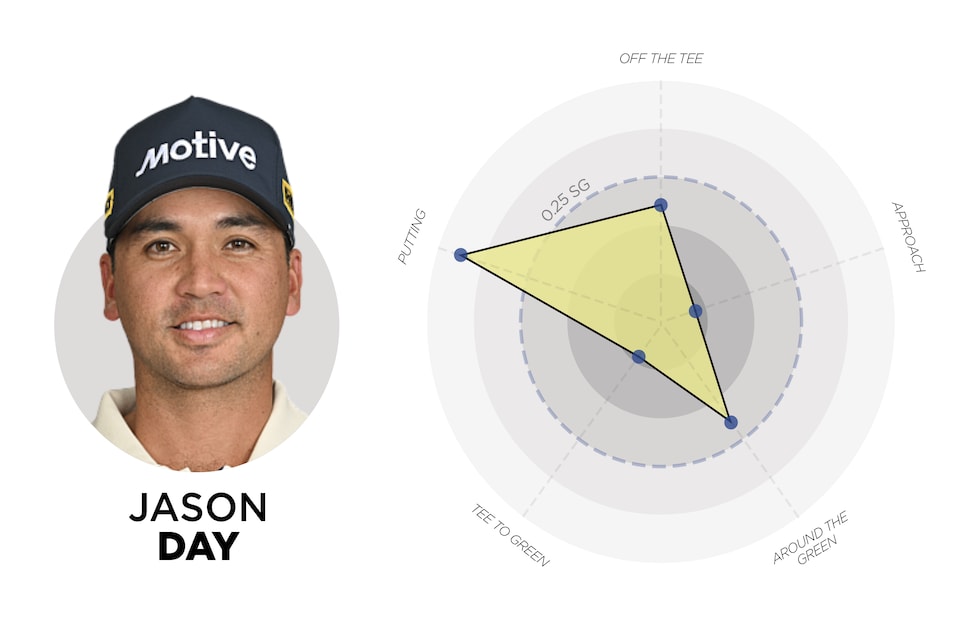
This is a group of players who despite struggling in some areas of the game, tend to have a distinct strength. For example, Jason Day. Though the Australian may be past the peak form that saw him win seven times in 10 months in 2016 and reach World No. 1, he remains one of the best putters in the game. Day gains more than 0.5 shot per round on the greens, good enough to be top 10 on tour. He remains above average off the tee and around the green but has struggled with his iron play in recent years, and ranks 144th on Tour in Strokes Gained Approach..
Total number of players: 47Notable examples: Jason Day, Matt Fitzpatrick, Patrick Cantlay, Will Zalatoris.
RELATED: Babe Ruth analyzes his own golf swing
 Two-Tool Players
Two-Tool Players
We’re already moving into the minority of tour players in 2024. If you own two tools or more, you were in the top 40 percentile of the PGA Tour this season. It’s here that we find Denny McCarthy, one of the most interesting players to analyze in today’s game. McCarthy is a short-game specialist. He has finished in the top three in Strokes Gained Putting five of his six seasons on tour and was second this year at 0.69 shots per round. Add that to a top-15 short game (0.35 SG Around the Green) and you have likely the best short game in golf. While he loses shots off the tee and in approach, his elite short game saw him finish 35th in the FedEx Cup and narrowly lose out on a win in a playoff at the Valero Texas Open.
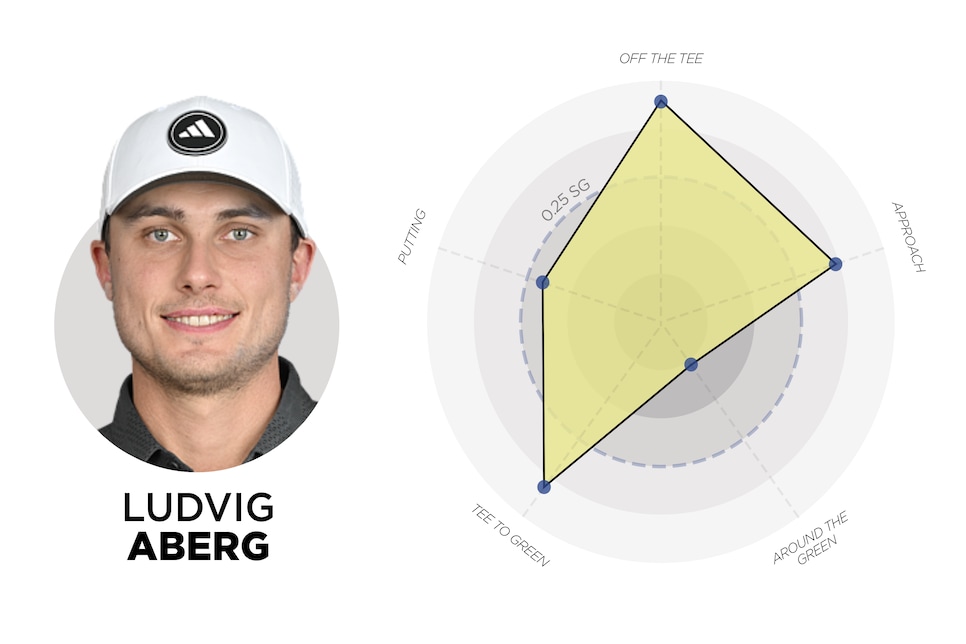
Total number of players: 38Notable examples: Denny McCarthy, Jordan Spieth, Min Woo Lee, Shane Lowry
Three-Tool Players
At this level, you are beginning to see the elite of the sport. When you are among the best players on tour in three of the five main statistical categories, you are likely to be competing at the top end of the leader boards at the weekend. Ludvig Aberg is in this group. Despite it being his first full year on the PGA Tour, the 24-year-old notched three runner-up finishes and finished 16th in the FedEx Cup. He owns one of the best tee-to-green games in golf. He ranked top 20 this season in Strokes Gained Off-The-Tee and Strokes Gained Approach. But as even he admits, his short game lets him down on occasion.
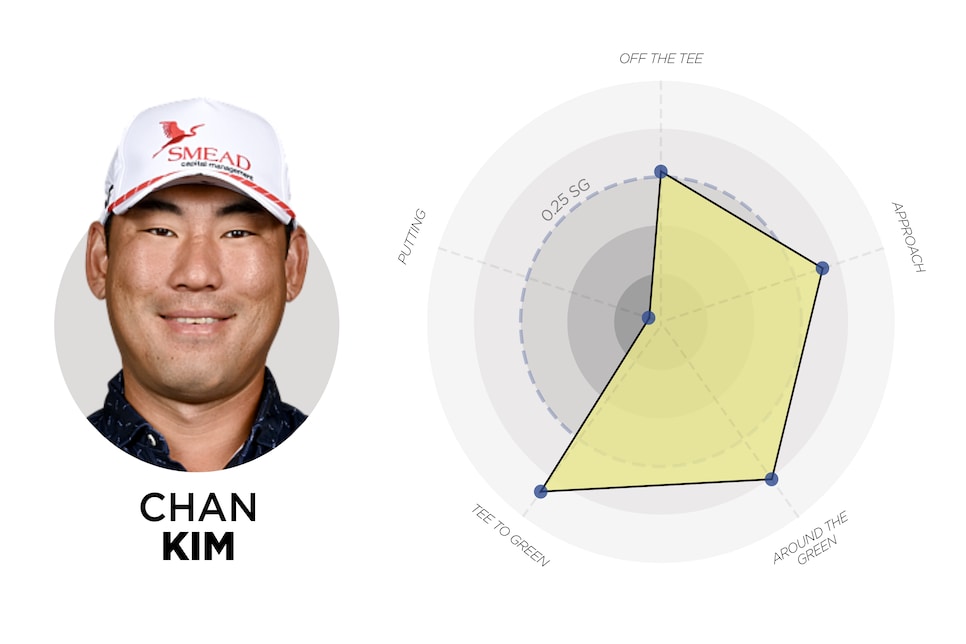
Total number of players: 25Notable examples: Ludvig Aberg, Rory McIlroy, Justin Thomas, Tony Finau.
Four-Tool Players
We’re approaching the top tier of the PGA Tour when identifying four-tool golfers. Players who perhaps have one slight weakness but excel so strongly in other parts of their game, that they are able to regularly compete at the highest level and in the biggest events. This group contains multiple majors champions, but it also includes the name Chan Kim. You’d be forgiven for not knowing a lot about the 34-year-old Arizona State grad. Like Aberg, 2024 was Kim’s first full season on the PGA Tour. Though three top 10s were only good enough to see him finish 94th in the FedEx Cup, he has a very unique mix of abilities. Kim ranked inside the top 40 in Strokes Gained Off The Tee, Approach, Around The Green and Tee-to-Green. However, his putting is a very obvious weakness. He loses 0.34 shots per round on the greens, ranking 147th out of 170 players on Tour. Despite this, being labeled as a four-tool player in your first season on Tour is a notable achievement for a player in his mid-30s.
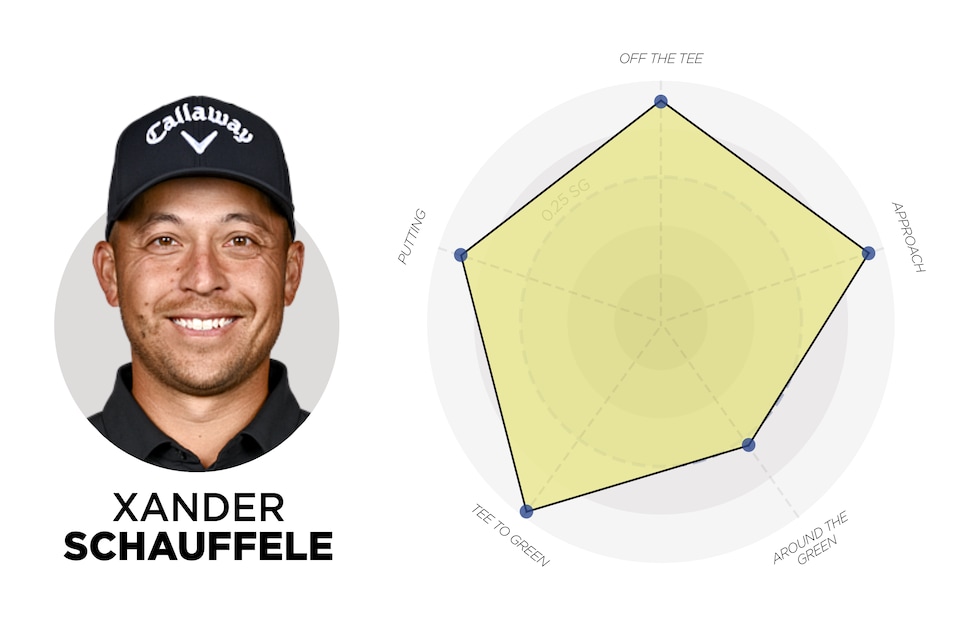
Total number of players: 7All examples: Chan Kim, Scottie Scheffler, Collin Morikawa, Hideki Matsuyama, Viktor Hovland, Sahith Theegala, Mav McNealy.
Five-Tool Players
Correction, that title should read “five-tool player”. Yes, there is only one. Your reigning PGA Championship winner and Champion Golfer of the Year, Xander Schauffele. The 30-year-old’s work with Chris Como has been well-covered this season. Along with winning two majors, he finished in the top 10 at the other two. His strength, it seems, is having no weakness. He is the only player on tour to rank inside the top 25 in all five Strokes Gained categories. In 21 events this season, he finished in the top-25 in all but one. He has made 55 consecutive cuts on the PGA Tour and is (currently) the definition of a five-tool golfer.
Total number of players: 1Only example: Xander Schauffele
Five-tool golfers are clearly rare, but how rare exactly?
Since Strokes Gained data on the PGA Tour started in 2004, only 20 players have gained more than 0.25 shots in the five key categories. An average of one per season.
Rare.
This article was originally published on golfdigest.com
The Latest News
-
December 25, 2024‘Stops riots outside the Members Stand’: Aussie skipper backs cult hero for big MCG return
-
December 25, 2024Sam Konstas is the right player at the right time for Australia. Here’s why
-
December 25, 2024Christmas at the ‘G! Aussie stars and family lap up big day
-
December 25, 2024‘They’re the idiots who picked me’: Aussie skipper’s hilarious message to relieve pressure on new opening sensation
-
December 25, 2024Aussie path to Champions Trophy glory begins with Ashes clash as schedule revealed


